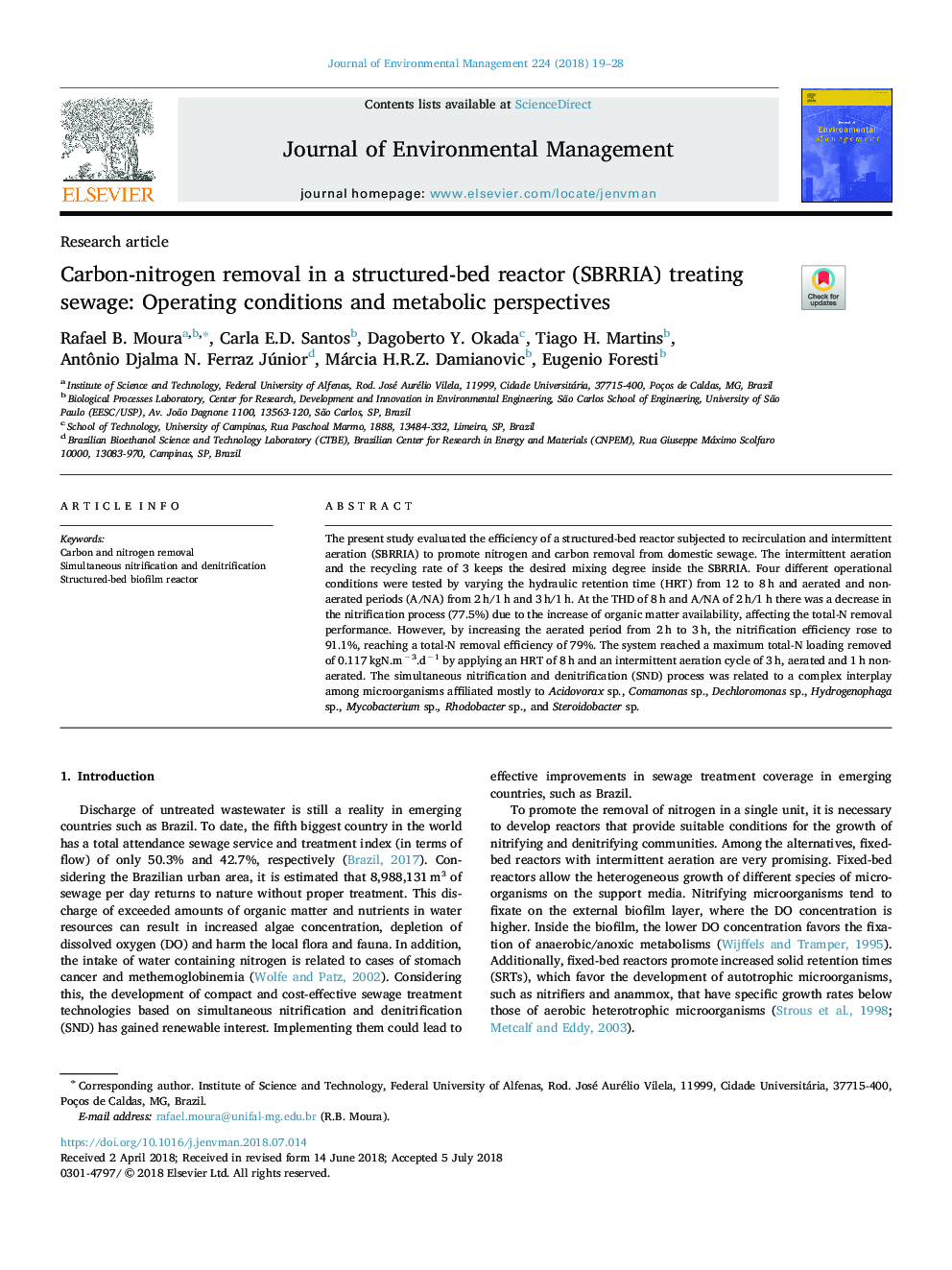| Article ID | Journal | Published Year | Pages | File Type |
|---|---|---|---|---|
| 7475473 | Journal of Environmental Management | 2018 | 10 Pages |
Abstract
The present study evaluated the efficiency of a structured-bed reactor subjected to recirculation and intermittent aeration (SBRRIA) to promote nitrogen and carbon removal from domestic sewage. The intermittent aeration and the recycling rate of 3 keeps the desired mixing degree inside the SBRRIA. Four different operational conditions were tested by varying the hydraulic retention time (HRT) from 12 to 8â¯h and aerated and non-aerated periods (A/NA) from 2â¯h/1â¯h and 3â¯h/1â¯h. At the THD of 8â¯h and A/NA of 2â¯h/1â¯h there was a decrease in the nitrification process (77.5%) due to the increase of organic matter availability, affecting the total-N removal performance. However, by increasing the aerated period from 2â¯h to 3â¯h, the nitrification efficiency rose to 91.1%, reaching a total-N removal efficiency of 79%. The system reached a maximum total-N loading removed of 0.117â¯kgN.mâ3.dâ1 by applying an HRT of 8â¯h and an intermittent aeration cycle of 3â¯h, aerated and 1â¯h non-aerated. The simultaneous nitrification and denitrification (SND) process was related to a complex interplay among microorganisms affiliated mostly to Acidovorax sp., Comamonas sp., Dechloromonas sp., Hydrogenophaga sp., Mycobacterium sp., Rhodobacter sp., and Steroidobacter sp.
Related Topics
Physical Sciences and Engineering
Energy
Renewable Energy, Sustainability and the Environment
Authors
Rafael B. Moura, Carla E.D. Santos, Dagoberto Y. Okada, Tiago H. Martins, Antônio Djalma N. Ferraz Júnior, Márcia H.R.Z. Damianovic, Eugenio Foresti,
